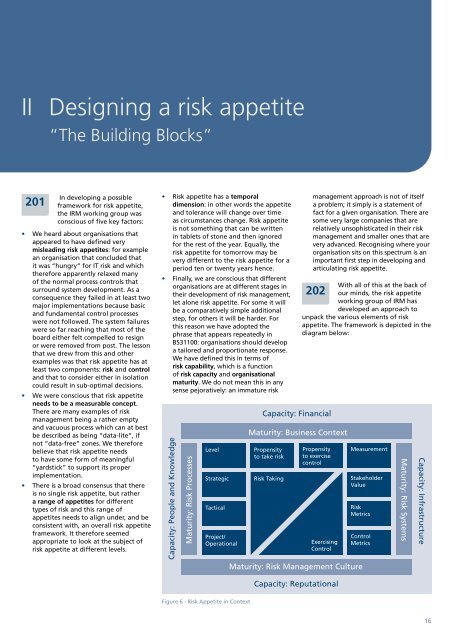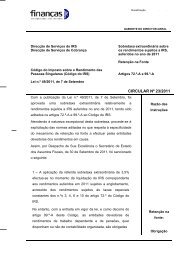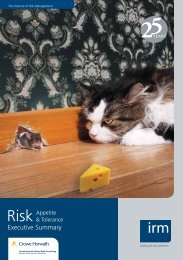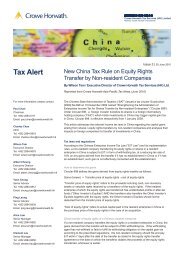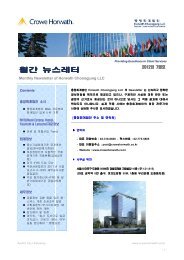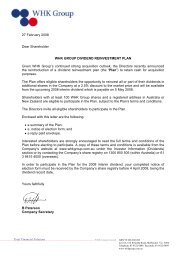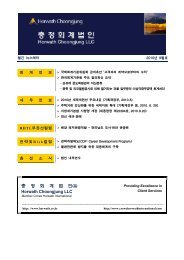Guidance Paper - The Institute of Risk Management
Guidance Paper - The Institute of Risk Management
Guidance Paper - The Institute of Risk Management
You also want an ePaper? Increase the reach of your titles
YUMPU automatically turns print PDFs into web optimized ePapers that Google loves.
II Designing a risk appetite<br />
“<strong>The</strong> Building Blocks”<br />
201<br />
In developing a possible<br />
framework for risk appetite,<br />
the IRM working group was<br />
conscious <strong>of</strong> five key factors:<br />
• We heard about organisations that<br />
appeared to have defined very<br />
misleading risk appetites: for example<br />
an organisation that concluded that<br />
it was “hungry” for IT risk and which<br />
therefore apparently relaxed many<br />
<strong>of</strong> the normal process controls that<br />
surround system development. As a<br />
consequence they failed in at least two<br />
major implementations because basic<br />
and fundamental control processes<br />
were not followed. <strong>The</strong> system failures<br />
were so far reaching that most <strong>of</strong> the<br />
board either felt compelled to resign<br />
or were removed from post. <strong>The</strong> lesson<br />
that we drew from this and other<br />
examples was that risk appetite has at<br />
least two components: risk and control<br />
and that to consider either in isolation<br />
could result in sub-optimal decisions.<br />
• We were conscious that risk appetite<br />
needs to be a measurable concept.<br />
<strong>The</strong>re are many examples <strong>of</strong> risk<br />
management being a rather empty<br />
and vacuous process which can at best<br />
be described as being “data-lite”, if<br />
not “data-free” zones. We therefore<br />
believe that risk appetite needs<br />
to have some form <strong>of</strong> meaningful<br />
“yardstick” to support its proper<br />
implementation.<br />
• <strong>The</strong>re is a broad consensus that there<br />
is no single risk appetite, but rather<br />
a range <strong>of</strong> appetites for different<br />
types <strong>of</strong> risk and this range <strong>of</strong><br />
appetites needs to align under, and be<br />
consistent with, an overall risk appetite<br />
framework. It therefore seemed<br />
appropriate to look at the subject <strong>of</strong><br />
risk appetite at different levels.<br />
• <strong>Risk</strong> appetite has a temporal<br />
dimension: in other words the appetite<br />
and tolerance will change over time<br />
as circumstances change. <strong>Risk</strong> appetite<br />
is not something that can be written<br />
in tablets <strong>of</strong> stone and then ignored<br />
for the rest <strong>of</strong> the year. Equally, the<br />
risk appetite for tomorrow may be<br />
very different to the risk appetite for a<br />
period ten or twenty years hence.<br />
• Finally, we are conscious that different<br />
organisations are at different stages in<br />
their development <strong>of</strong> risk management,<br />
let alone risk appetite. For some it will<br />
be a comparatively simple additional<br />
step, for others it will be harder. For<br />
this reason we have adopted the<br />
phrase that appears repeatedly in<br />
BS31100: organisations should develop<br />
a tailored and proportionate response.<br />
We have defined this in terms <strong>of</strong><br />
risk capability, which is a function<br />
<strong>of</strong> risk capacity and organisational<br />
maturity. We do not mean this in any<br />
sense pejoratively: an immature risk<br />
Capacity: People and Knowledge<br />
Maturity: <strong>Risk</strong> Processes<br />
Level<br />
Strategic<br />
Tactical<br />
Project/<br />
Operational<br />
Capacity: Financial<br />
Maturity: Business Context<br />
Propensity<br />
to take risk<br />
<strong>Risk</strong> Taking<br />
management approach is not <strong>of</strong> itself<br />
a problem; it simply is a statement <strong>of</strong><br />
fact for a given organisation. <strong>The</strong>re are<br />
some very large companies that are<br />
relatively unsophisticated in their risk<br />
management and smaller ones that are<br />
very advanced. Recognising where your<br />
organisation sits on this spectrum is an<br />
important first step in developing and<br />
articulating risk appetite.<br />
With all <strong>of</strong> this at the back <strong>of</strong><br />
202 our minds, the risk appetite<br />
working group <strong>of</strong> IRM has<br />
developed an approach to<br />
unpack the various elements <strong>of</strong> risk<br />
appetite. <strong>The</strong> framework is depicted in the<br />
diagram below:<br />
Propensity<br />
to exercise<br />
control<br />
Exercising<br />
Control<br />
Measurement<br />
Stakeholder<br />
Value<br />
<strong>Risk</strong><br />
Metrics<br />
Control<br />
Metrics<br />
Maturity: <strong>Risk</strong> <strong>Management</strong> Culture<br />
Maturity: <strong>Risk</strong> Systems<br />
Capacity: Infrastructure<br />
Capacity: Reputational<br />
Figure 6 - <strong>Risk</strong> Appetite in Context<br />
16


